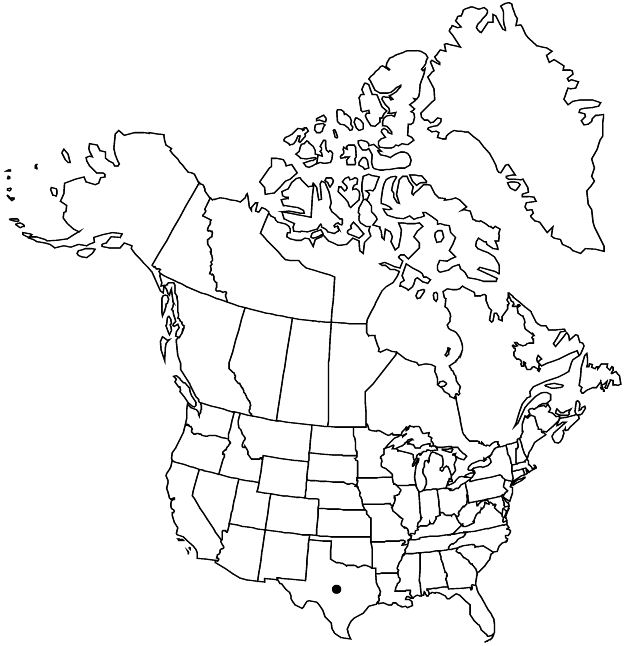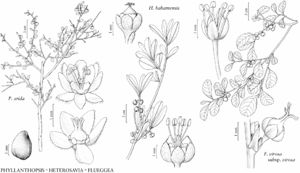Phyllanthopsis arida
Kew Bull. 63: 47. 2008.
Shrubs, dioecious, (2–) 4–6 (–10) dm. Stems highly branched, branches spreading, longest leafy branchlets to 10 cm. Leaves: petiole 0.5–3 mm; blade elliptic, 4–10 × 3–6 mm, base cuneate to rounded, apex acute to rounded or mucronate, both surfaces pilose; secondary-vein pairs 1–3, obscure. Inflorescences: staminate flowers usually solitary, sometimes 2–3 per fascicle; pistillate flowers usually solitary, rarely 2 per fascicle. Staminate flowers: sepals oblong to obovate, 1–1.5 mm; petals 0.8–1 mm; nectary 10- or irregularly crenulate; pistillode pilose. Pistillate flowers: sepals elliptic to oblong, 1–1.5 mm; petals 0.4–0.6 mm; nectary 5-crenate to 10-crenate; pistil 3 (–4) -carpellate. Capsules subglobose, 5–6 mm diam., shallowly 3 (–4) -lobed; columella 2 mm. Seeds dark-brown, 2.5–3 mm; caruncle absent.
Phenology: Flowering and fruiting Jul–Sep.
Habitat: Scrub and rock crevices, limestone.
Elevation: 1000–2500 m.
Distribution

Tex., Mexico (Chihuahua), Mexico (Coahuila)
Discussion
Phyllanthopsis arida is rare; populations are highly localized, known only from El Solitario and the Dead Horse Mountains in the Big Bend region of Texas and two localities in nearby Mexico. Its distribution may be relictual (B. H. Warnock and M. C. Johnston 1960).
Selected References
None.
Lower Taxa
"connate" is not a number."/2" is not declared as a valid unit of measurement for this property."dm" is not declared as a valid unit of measurement for this property.
